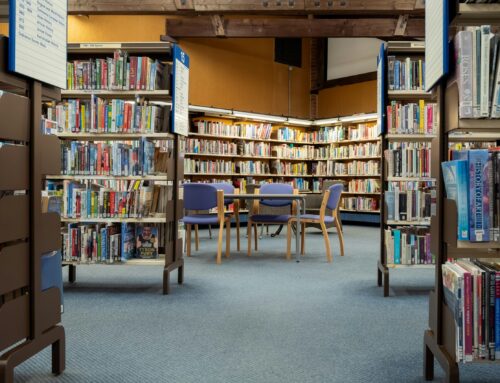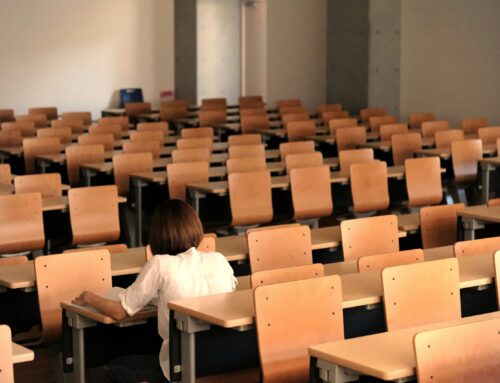 What is ESD and Why is it Valuable Education?
What is ESD and Why is it Valuable Education?
The idea of Education for Sustainable Development (ESD) surrounds the emphasis of environmental and sustainability learning within classrooms. In placing importance on these subjects, students are able to better advocate for their environment and be driving forces in the push towards future sustainable development. There are key components to ESD that serve as the foundation of its teachings, and as detailed within an article from the United Nations Educational, Scientific and Cultural Organization (UNESCO), “ESD advocates for learning that is: Cognitive…Socio-emotional…[and]Behavioral.”[1] These aspects serve to improve thinking, build social skills and emotional intelligence, and encourage positive behaviors.[1] With these features, ESD can help educators approach teaching sustainability to students in a way that will not only benefit student’s knowledge of the specific topic, but also enable future success in their academic ventures.
In having these established bases of learning, ESD works to present sustainable development through such methods. It aims to “[teach] individuals how to make informed decisions and take action, both individually and collectively, to change society and protect the planet.”[1] These factors illustrate the value of presenting this topic as it provides students with the informed incentive needed to have the desire towards progressive environmental change. With this motivation, they can move forward in their academic and future careers with the knowledge, values, and skills necessary to take on issues like climate change, overuse of resources, etc.[1] Such value of ESD is observable in school environments, where the application of this learning is an integral element to a student’s drive and confidence in investigating the issues within the real world. Through the conducting of pre and post surveys of students relating to this experience, a study examines the benefits of environmental education. In their conclusive findings, researchers discovered that the increased engagement of students in focused environmental investigations allowed students to develop the sense of confidence needed to solve local problems and improved their accomplishments in the study of science.[2] These and other means of applying ESD to curriculums will help to engage students in discussions about the environment and what they can do to learn and eventually help combat the issues faced.
Applications of ESD in Educational Settings
There are many examples of how ESD has been applied to student’s learning and how it has not only aided in their study of science, but of other important subjects as well. One specific study is examined within TEM Journal, discussing the application of the Renewable Energy Learning Project (RELP). The main goals of RELP consist of a few main characteristics, placing emphasis on the creation of renewable energy, stressing the importance of sustainability and environmental consciousness, and training students to better their design skills and communication abilities.[2] With RELP, students are gaining a well-rounded learning environment, where they touch upon many different subjects while perpetuating the topic of sustainability.
Learning opportunities and outcomes of ESD are vast and allow students to learn various elements, such as how to incorporate technology into their projects, different engineering aspects like designing processes and development, and even art in the creativity expressed within their project design.[2] These different elements show how versatile ESD is when applied to curriculums. In parallel, a recent study conducted pertaining to the topic revealed how ESD can take on different forms, showing how it could be “…delivered as a broad entry, stand-alone course, or as part of another discipline-focused course…”[3] These varying formats allow for students within any curriculum to feel secure in the learning provided through ESD.
In addition to RELP, there have been other means of ESD that have allowed educators to outline specific goals and/or objectives that surround different elements of learning. In a recent study published through the Environment Education Research journal, a list of goals referred to as Sustainable Development Goals (SDGs) or Global Goals was curated to emphasize specific elements of environmental learning, such as placing emphasis on the nature of sustainability problems and recognizing the connection that other issues like poverty have in relation to climate change.[3] By creating these goals, educators are able to pinpoint specific issues for their students to examine, study, and carry out detailed projects with. They can then use these findings and the overall knowledge gained from the experience to influence their impact outside of their educational setting.
When it comes to actively teaching ESD, the way a teacher approaches the topic creates different experiences, especially in examining varying curriculums. Such is examined through an article discussing teachers’ profiles in ESD, where the instruction of its values in holistic, pluralistic, action-oriented practices is based upon the individual educator’s comprehensive beliefs and interests in ESD.[4] This discussion illustrates how ESD may not be presented in a linear fashion across differing curriculums, but the core values of its message are sustained throughout. Such values convey the importance of individualized ESD teachings amongst students and their educators, where both parties are able to gain a proficient understanding of its core topics.
All in all, ESD has the power to impact student’s lives and advance their knowledge of the environment and specific issues like sustainability. In the continuous development of its integration into curriculums, ESD is teaching students how they can have a hand in the positive progression of our environment and attain the confidence to make real-world efforts in combating climate issues.
How Does PSG Fit In?
Publishing Solutions Group values the importance in learning guidelines like ESD, aiming to provide the polished and articulate materials necessary in order for students to thrive in their learning environments. We work with clients closely to ensure that their print and/or digital content can aid educators in fostering a prosperous and informative environment relevant to today’s issues like sustainability. With PSG’s knowledge of educational publishing and years of experience in the field, we have the equipped staff and tools necessary to provide the content for these topics.
[1] https://www.unesco.org/en/sustainable-development/education/need-know
[2] https://www.neefusa.org/what-we-do/k-12-education/benefits-environmental-education
[3] https://www.tandfonline.com/doi/pdf/10.1080/13504622.2023.2280438
[4] https://www.tandfonline.com/doi/pdf/10.1080/13504622.2023.2168622
Image free to use under the Unsplash License.




